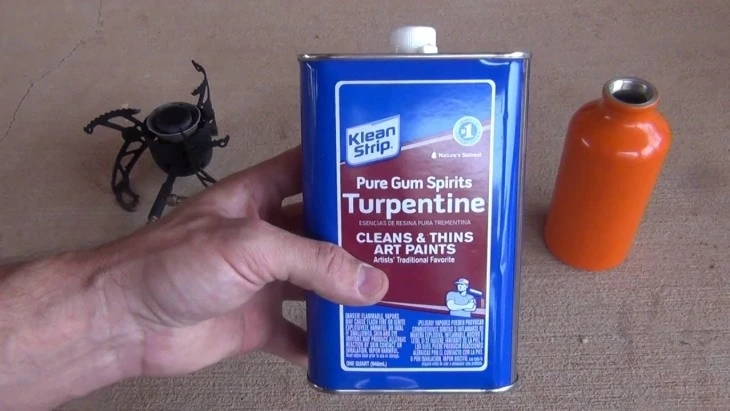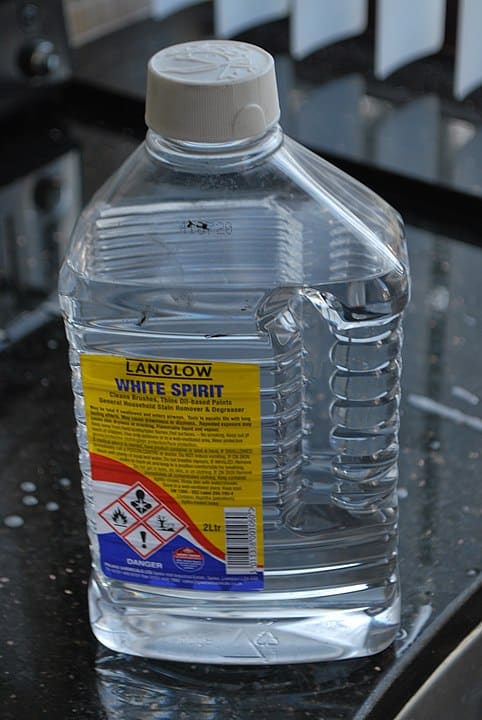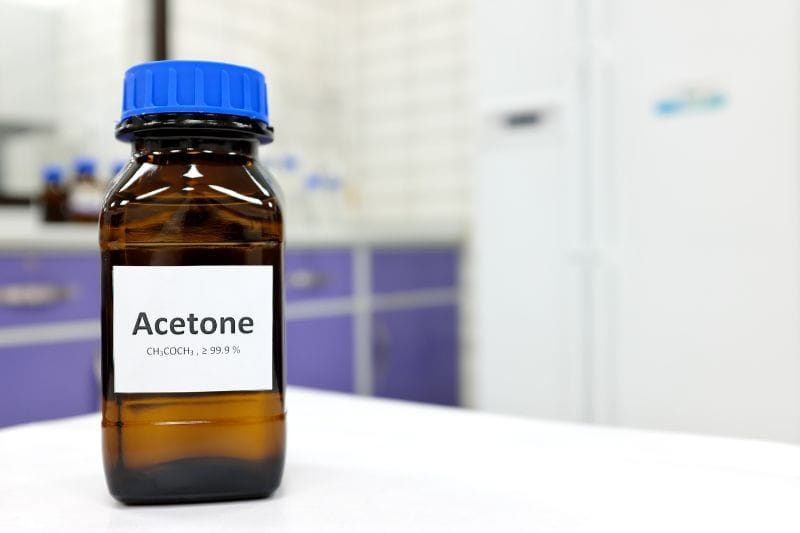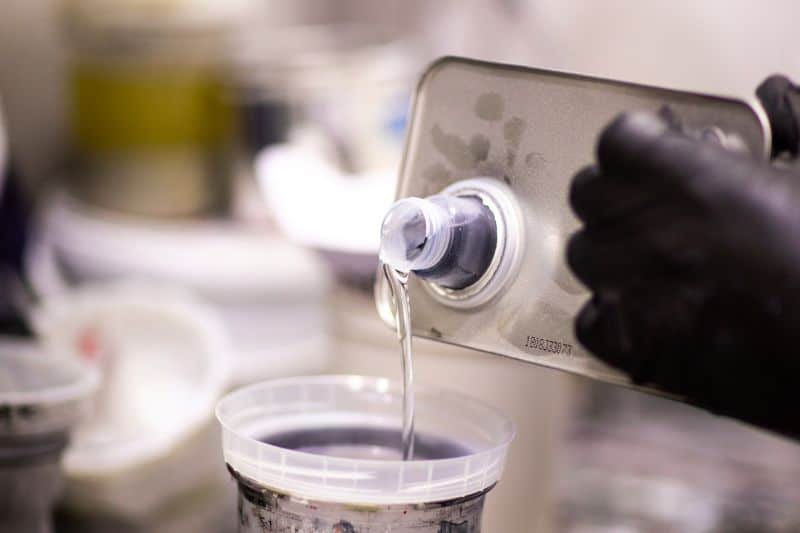Most likely, every professional in the construction and arts industry has come across paint thinners. Paint thinner is a solvent made from volatile organic compounds that dilute or clean paints. No wonder it constantly appears in the automobile, construction, and arts industry.
Paint thinner is crucial in the sectors where they use it. In fact, it has been adapted as a cleaning agent for many, making it appear even in homes and other buildings. The problem is that few people know how to dispose of paint thinner safely and eco-friendly.
What is Paint Thinner Used for?
Also known as solvent, paint thinner is a versatile compound used in different sectors for multiple purposes.
Paint thinners have many purposes and can be used by different people. Some of the uses include:
Diluting Paints and Coatings
The primary use of a paint thinner is to thin out paint and coatings. This reduces the thickness of the paint, making it easier to apply. They break down the oil in the paint, mixing well with it and reducing the viscosity.
Cleaning Tools and Equipment
Another significant use of paint thinner is cleaner. Due to its ability to dissolve and thin out complex compounds, paint thinner is excellent for cleaning. It cleans by thinning out stains that would otherwise be stubborn and difficult to clean.
Sometimes, it just does the work halfway, and soap takes over—painters, artists, and many other people using paint use thinner for cleaning.
Thinning Epoxy Resins
Although it is not always ideal, thinners can also work for helping to reduce the viscosity of Epoxy resin. This allows the resin to meet the resin ratio necessary for curing.
Surface Preparation
Paint thinner is ideal for preparing a surface before repainting. This can help remove old paint, preventing it from overshadowing the new coat. It can also be used to remove dirt and other particles that can make painting seamless.
Removal of Paint and Graffiti
Just like it can thin out paint and remove old paint, you can also use thinner to remove graffiti from where you do not want it.
Artistic and Craft Use
In art and craft, paint thinner can allow artists to express themselves better. Painters can achieve desired effects using paint thinner to thin out paint, make the color lighter or achieve any other effects.
Bad Ways to Dispose of Paint Thinner
There are numerous wrong ways people dispose of paint thinners. Even if these ways seem straightforward, they pose significant risks.
To many people, the wrong ways of disposing of thinners are easier and feel cheaper. However, there are significant risks to the people disposing of the thinner and the environment. Here are some of the methods you should not employ when disposing thinner.
Pouring It Down the Drain
If you plan to pour your leftover paint thinner down the drain, it is time to end it. There are many consequences for pouring paint thinner down the drain. It can damage or clog the drain, creating a plumbing problem. It can also cause problems for the water and have a long-term impact on the environment and health.
Burning
It is a hazardous practice to burn paint thinner. Paint thinner is flammable and can cause a fire problem if it is burned. Also, paint thinner will release harmful substances into the environment if burned, causing air pollution. Also, the remains of the burned thinner can be harmful to the earth, polluting it.
Dumping in the Yard
Another way you should not dispose of your leftover paint thinner is by leaving it in the yard. They contain toxic chemicals and volatile organic compounds that should not leach to the ground. When these chemicals leach to the ground, they can cause soil pollution. Also, they can contaminate the groundwater, making it unsafe.
They can also negatively affect plants and wildlife. In addition, dumping paint thinner in your yard is a bad idea if you have pets. They can poison your pets and cause them harm.
Evaporation
Some people attempt to leave paint thinners out in the open to evaporate. However, it is a bad idea. It is grossly ineffective as it may not remove the harmful chemicals from the thinner. Instead, it can leave a concentrated residue behind. Besides its ineffectiveness, trying to evaporate thinner can cause pollution and fire danger.
Disposing With Household Trash
Disposing of paint thinner with household waste is an ineffective and dangerous method. The harmful chemicals will not be neutralized. Instead, it will be mixed with other things and may spread or be mismanaged.
Ways to Dispose of Paint Thinner Safely
Disposing of paint thinner safely is crucial to protecting humans and the environment. There are many environment-safe methods to choose from while doing this.
Disposing of paint thinner properly can help keep people and the environment safe. With different types of safe waste disposal methods to choose from, you have good choices to make. Some of the choices include:
Check and Follow Local Regulations
Due to how dangerous and toxic a paint thinner can be if not handled properly, many places have regulations regarding its safe handling and disposal. These regulations differ from one location to another. However, the bottom line, wherever it may be, is to prevent dangerous waste disposal and encourage safer handling and disposal.
Consider Recycling
Paint thinners can be recycled, depending on your area’s type and recycling programs. Recycling is a great way to dispose of leftover paint thinners. The solvent-based paint thinner is the best type to be recycled. To recycle paint thinner, you need to separate the thinner from paint residue and dirt.
Choose a Ventilated Area
When disposing of paint thinner, choose an open, well-ventilated space. You should choose an outdoor space with good airflow. If you are using an indoor space, ensure there is good ventilation. Disposing of paint thinner in an enclosed space can cause contamination, pollution, fire hazard, or explosion.
Consider Hazardous Waste Collection Programs
Hazardous waste collection programs are periodic events handled by the local and regional authorities. These events are to ensure the safe collection and disposal of hazardous wastes. It is a controlled process that has regulation and is relatively safe. Therefore, it is an excellent way to dispose of leftover paint thinner, thinner residues and thinner products.
Do Not Forget the Empty Container
Disposing of paint thinners does not end with the compound alone. You must also properly dispose of the thinner container to ensure maximum safety. You should properly clean and label the container to prevent inappropriate use later. Also, it would help if recycled according to the local regulations.
Is Paint Thinner Harmful To The Environment?
Paint thinner contains a variety of toxic chemicals that can be harmful if it is inhaled. That is why there is constant advice that users should handle it with care.
Also, the toxicity of the substance is enough to warrant the need for a unique disposal method. However, there is sometimes the possibility of affecting one even if great care is taken. Some of those dangers include:
- The release of VOCs into the environment can cause air pollution.
- Some thinners contain ozone layer depletion properties.
- Dumping or pouring paint thinner into water bodies can cause water pollution.
- Spilling of paint thinner can also cause soil contamination.
- Paint thinners can be toxic to plants and wildlife, killing them or causing them harm.
- The introduction of paint thinners into the environment can disrupt the ecosystem.
- Paint thinner during production and disposal can cause greenhouse gas emissions, leading to climate change.
- Improper handling and disposal of paint thinners can also pose health risks to humans.
Alternatives To Paint Thinner
Due to paint thinner’s toxic and dangerous nature, people have continuously sought alternatives.
Different alternatives can serve the various functions of paint thinners. When choosing a substitute for thinner, ensure that the substance can work perfectly. Here are some of the substances you can consider:
Water
Water is a good alternative for substituting thinner. Water can be used to dilute water-based paint like emulsion. Water is a healthy and safe option for thinner.
Turpentine

Turpentine is also another substitute for thinner. It can be used to reduce paint’s viscosity. What is to note is that turpentine is also harmful and can be dangerous if not properly handled. However, it is an alternative as it is less toxic compared to thinner.
Mineral Spirits

Mineral spirit can be used to substitute thinner for diluting oil-based paint. You need a high-quality Mineral spirit, and you should choose an adequately ventilated place to work in.
Acetone

Acetone is a readily available and cheaper option for thinner. Due to its solvent ability, it can readily replace thinner in removing paints. Acetone is relatively safer and easier to dispose of as it evaporates quickly without leaving behind toxic residue.
Commercial Paint Remover
Commercial paint remover is an available and inexpensive option for cleaning paint. It is designated to remove paint, so it is safe and fulfills the purpose perfectly.
Conclusion
If you fail to take suitable measures, using paint thinner can pose harm to you and the environment. Therefore, you should handle and dispose of thinner properly when you use it, as it is volatile and toxic.
Disposing thinners wrongly can look easy, but they are dangerous. The good news is, the right way is just as easy, probably easier.






